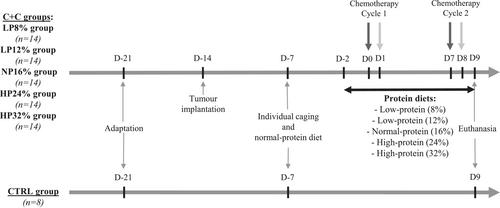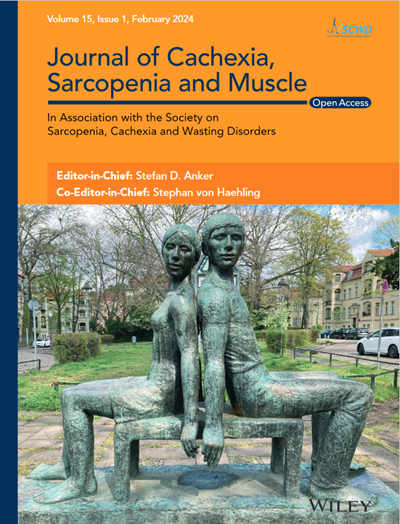Combating malnutrition and cachexia is a core challenge in oncology. To limit muscle mass loss, the use of proteins in cancer is encouraged by experts in the field, but it is still debated due to their antagonist effects. Indeed, a high protein intake could preserve lean body mass but may promote tumour growth, whereas a low-protein diet could reduce tumour size but without addressing cachexia. Here we used a realistic rodent model of cancer and chemotherapy to evaluate the influence of different protein intakes on cachexia, tumour response to chemotherapy and immune system response. The goal is to gain a closer understanding of the effect of protein intake in cancer patients undergoing chemotherapy.
Female Fischer 344 rats were divided into six groups: five groups (n = 14 per group) with cancer (Ward colon tumour) and chemotherapy were fed with isocaloric diets with 8%, 12%, 16%, 24% or 32% of caloric intake from protein and one healthy control group (n = 8) fed a 16% protein diet, considered as a standard diet. Chemotherapy included two cycles, 1 week apart, each consisting of an injection of CPT-11 (50 mg/kg) followed by 5-fluorouracil (50 mg/kg) the day after. Food intake, body weight, and tumour size were measured daily. On day 9, the rats were euthanized and organs were weighed. Body composition was determined and protein content and protein synthesis (SUnSET method) were measured in the muscle, liver, intestine, and tumour. Immune function was explored by flow cytometry.
Cancer and chemotherapy led to a decrease in body weight characterized by a decrease of both fat mass (−56 ± 3%, P < 0.05) and fat-free mass (−8 ± 1%, P < 0.05). Surprisingly, there was no effect of protein diet on body composition, muscle or tumour parameters (weight, protein content, or protein synthesis) but a high cumulative protein intake was positively associated with a high relative body weight and high fat-free mass. The immune system was impacted by cancer and chemotherapy but not by the different amount of protein intake.
Using a realistic model of cancer and chemotherapy, we demonstrated for the first time that protein intake did not positively or negatively modulate tumour growth. Moreover, our results suggested that a high cumulative protein intake was able to improve moderately nutritional status in chemotherapy treated cancer rodents. Although this work cannot be evaluated clinically for ethical reasons, it nevertheless brings an essential contribution to nutrition management for cancer patients.



